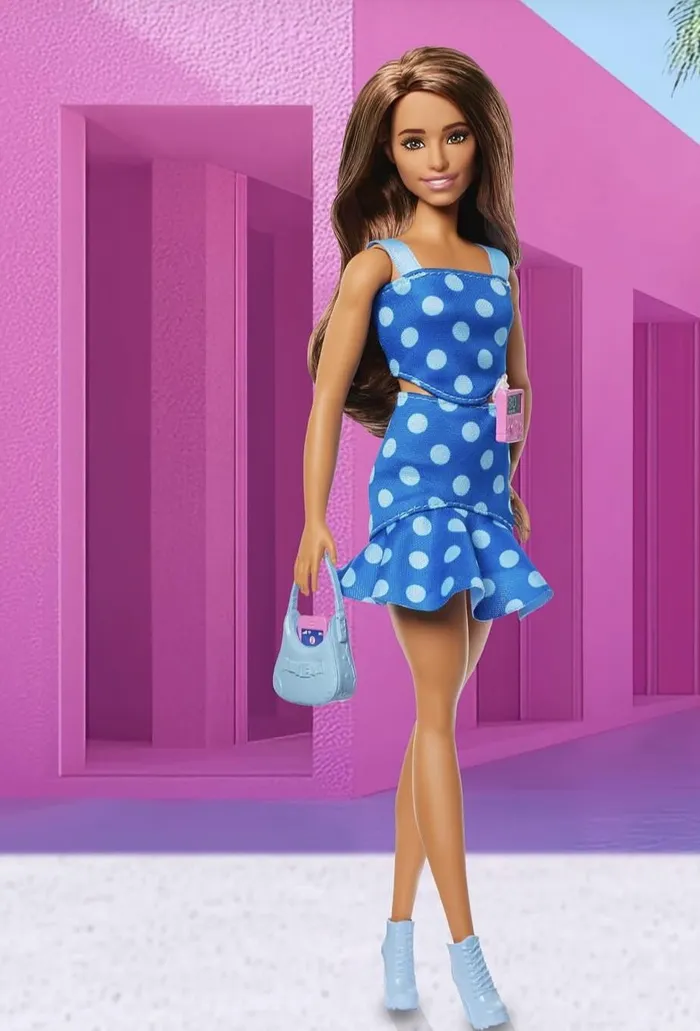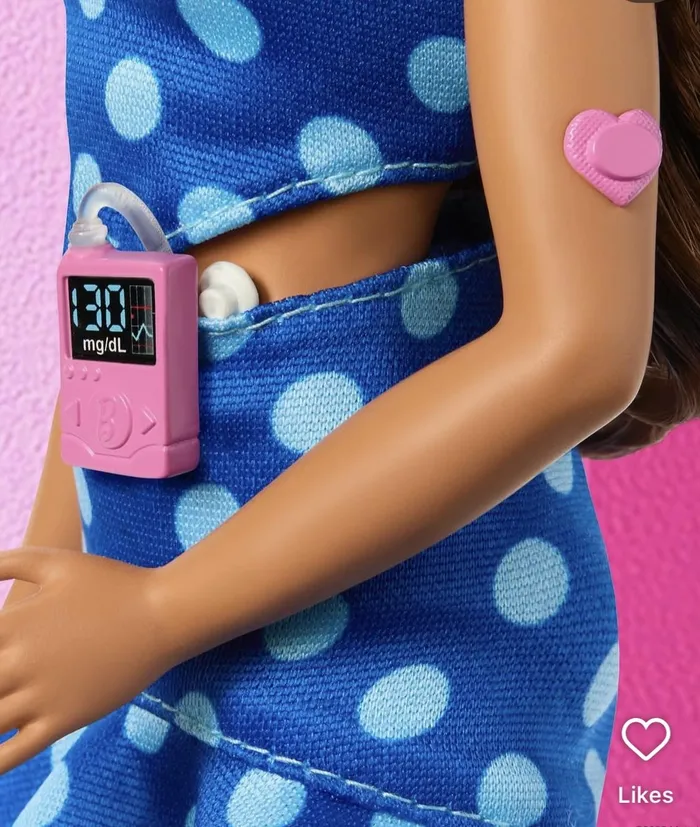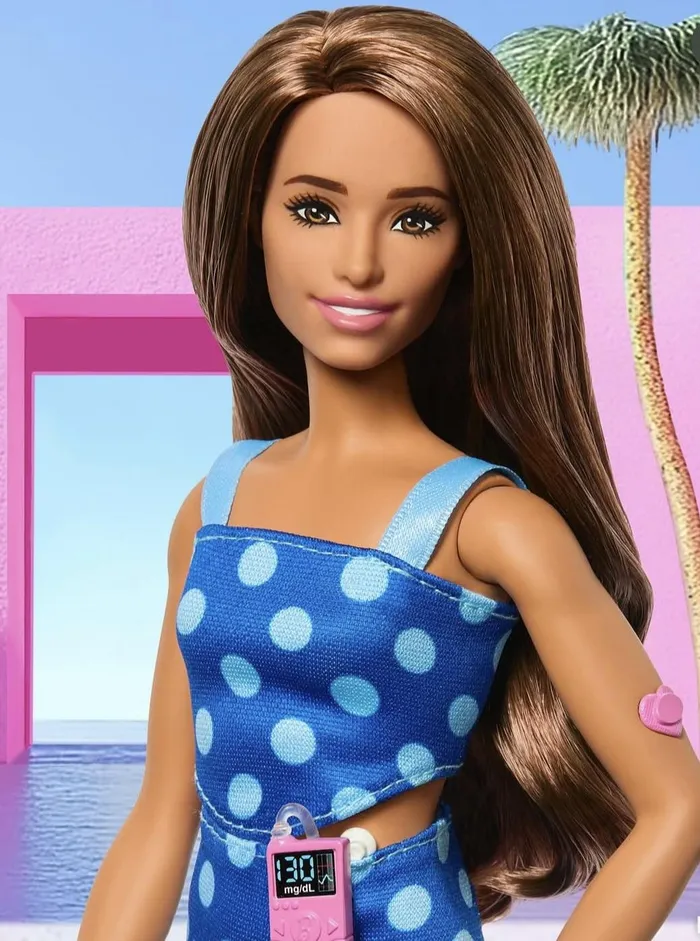Empowering representation: Barbie's groundbreaking doll with type 1 diabetes

Mattel has introduced its first Barbie with type 1 diabetes, complete with an insulin pump, continuous glucose monitor (CGM), and a purse packed with medical supplies and snacks.
Image: Barbie Instagram
If you grew up brushing Barbie’s hair and dreaming of her life in a Dreamhouse, you’re not alone. Barbie has always been more than just a doll. For decades, she’s been a reflection of culture, beauty standards and aspirations. But in recent years, Barbie has stepped into a new role - one that’s as inspiring as it is impactful.
For many of us, Barbie was more than just a toy - she was a world of imagination, possibility, and (let’s be honest), a reflection of what we thought “perfect” looked like.
But perfection looks a lot different now and that’s a very good thing. In a groundbreaking move that’s making both waves and headlines, Mattel has introduced its first Barbie with type 1 diabetes, complete with an insulin pump, continuous glucose monitor (CGM) and a purse packed with medical supplies and snacks.
These features aren’t just accessories; they’re tools to educate, normalise and empower. By including these medical devices, Mattel is helping to reduce the stigma often associated with type 1 diabetes and encouraging conversations about the condition.
Representation
According to reports, the groundbreaking doll was created through a collaboration between Mattel and Breakthrough T1D, formerly the Juvenile Diabetes Research Foundation (JDRF).
Emily Mazreku, the organisation’s director of marketing and communications, played a pivotal role in the design process. Mazreku, who lives with type 1 diabetes, ensured the doll was both medically accurate and emotionally resonant.
“Mattel approached us, and they wanted this to be a part of their Fashionista line,” Mazreku said. “We jumped on that opportunity right away.”

Emily Mazreku, the organisation’s director of marketing and communications, who lives with type 1 diabetes, ensured the doll was both medically accurate and emotionally resonant.
Image: Barbie/Instagram
Mazreku spent nearly two years conducting focus groups to ensure the doll truly represented the type 1 diabetes community. Even the blood glucose readings on Barbie’s phone 130 mg/dl, a normal range were drawn from Mazreku’s actual data during the design process.
What is Type 1 Diabetes?
Type 1 diabetes is an autoimmune condition where the body’s immune system mistakenly attacks the insulin-producing cells in the pancreas. Insulin is essential for converting food into energy. Without it, people with type 1 diabetes must rely on insulin injections or pumps to survive. Unlike type 2 diabetes, which is often associated with lifestyle factors, type 1 diabetes can develop at any age, though it’s most commonly diagnosed in childhood.
According to the Centres for Disease Control and Prevention (CDC), managing the condition involves balancing blood sugar levels through insulin therapy, diet and physical activity - something this new Barbie subtly highlights through her accessories.
People living with it rely on insulin every day to survive. It's often misunderstood, and until now, rarely acknowledged in popular toys. So when Barbie showed up in her signature fashion-forward outfit blue polka dot crop top, matching purse and glucose-tracking tech, she wasn't just making a style statement. She was normalising a health condition that many kids quietly deal with every single day.
“We know that increasing the number of people who can see themselves in Barbie continues to resonate,” said Devin Duff, a spokesperson for Mattel, in an email to CNN.
This isn’t the first time Barbie has stepped beyond the stereotype. Over the years, Barbie’s Fashionista line has grown to include over 175 diverse dolls, featuring a wide range of skin tones, hair textures, body types and abilities. Some standout additions include:

Type 1 diabetes is an autoimmune condition where the body’s immune system mistakenly attacks the insulin-producing cells in the pancreas.
Image: Barbie Instagram
- A Barbie with vitiligo, a condition that causes patches of skin to lose pigment.
- A doll with a prosthetic leg, promoting visibility for children with limb differences.
- A Barbie with behind-the-ear hearing aids.
- A blind Barbie with a white cane.
- And one of the most popular in 2024 is a Barbie with Down syndrome, developed in collaboration with the National Down Syndrome Society.
This growing list sends a clear message: beauty isn’t one-size-fits-all and every child deserves to feel seen. It may seem small - a doll, a detail, a design - but representation in toys can have a powerful psychological impact, especially in children.
Studies from the Journal of Applied Developmental Psychology have shown that when children see their identity reflected in media and toys, it boosts self-esteem, reduces stigma and can improve emotional development. Toys are often children’s first introduction to societal norms. When they see themselves represented, especially in a positive and empowered way, it has a lasting effect. It’s also about education. A Barbie with diabetes doesn't just reflect kids with the condition, it helps others learn about it.
Not flawless, not fantasy, but reflective. Reflective of the girl managing her insulin levels at school. Reflective of the boy learning what vitiligo is because his friend has it. Reflective of the child who never felt included in their toy box until now.
And yes, even reflective of the "weird Barbie" that America Ferrera’s character in Barbie (2023) lovingly interacts with the one who's been played with, worn down and drawn on, but remains uniquely her own.